For a while now I've been slowly teaching myself the skills to refurbish relatively low-quality digital images of modern art works from the internet and print life-size faithful reproductions of the original works on my high-resolution printer. At first because I wanted for myself something as close as possible to having the original works in my life, but for me it's become an enterprise of scholarship as well. As I chased obscure threads of art history through the public domain of images, an intuition grew in me that works on paper had a larger role than commonly acknowledged in the development of modern art.
To see more images of my print discussed here, and to purchase a copy, please follow this link.
But it was close examination of Cezanne's watercolors that opened my eyes to how significant that role may well have been. His watercolors don't get nearly the attention his canvases do. Many or most of them were studies or exercises for his own benefit rather than exhibition or sale to the public. Their styles ranged from classically realistic still lives to landscapes spun from ephemeral webs of the proto-Cubist colored rectangles he's so well-known for.
And it seems to me the informality and saturated hues of watercolor enhanced the elements of experiment and surprise, and so some of these works had the perhaps-unintended result of planting seedlings of modernist visual practices that grew beyond the branch Picasso and Braque grasped and ran with.
I chose to reproduce a study of roses in a vase that Cezanne painted around 1885. The result is the same size as the original, printed on Arches watercolor paper for an authentic look and feel (see images above).
On a technical level, I'm rather proud of it, because the original work shows considerable signs of its age (see below), and restoration of the starting image was one of my biggest challenges so far:
Some people may object to the very idea of reproduction as an act of scholarship, but when I hold the print I imagine something like the impact it must have had fresh off the easel, for the first time in almost a century and a half; and what is scholarship if it doesn't recover understanding of a work's original context and impact?
The reason I chose this work is the way I sense that it embodies space. Cezanne here doesn't use his well-known technique of intersecting colored rectangles. Rather, there is an interplay of color and void. The way the color hangs on in the composition creates a sense of bulging, not due to perspective or any other classical trick, but an innate impression of a sort of pregnant space, or super-present space.
I was immediately reminded of Charles Demuth, an important early American modernist of the nineteen-twenties and thirties, whose sense of pregnant or foreboding space is an important aspect of his work and his contribution:
Cezanne is famous for breaking the expected relationships of color and space in his best-known canvases. But working in watercolor, it seems he couldn't help but explore new paths. Of course many later artists followed him down those paths, some down well-known tracks, others I think in far less-expected and more surprising ways. I hope to discover and document some of those artists in future reproductions.


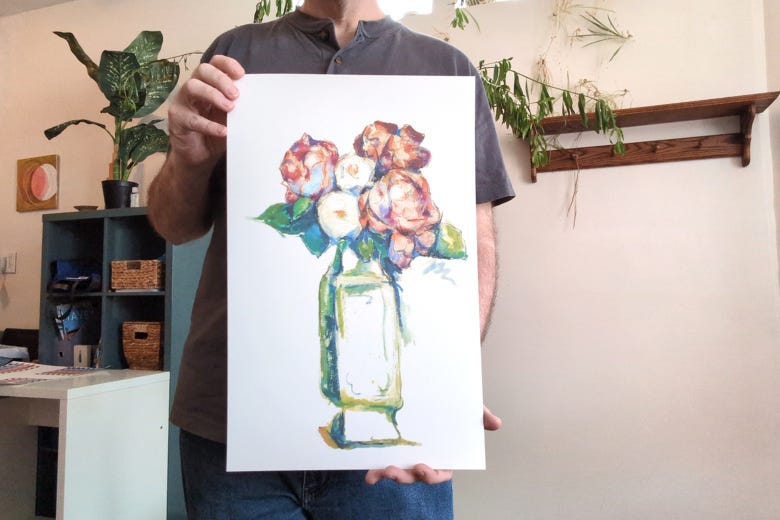
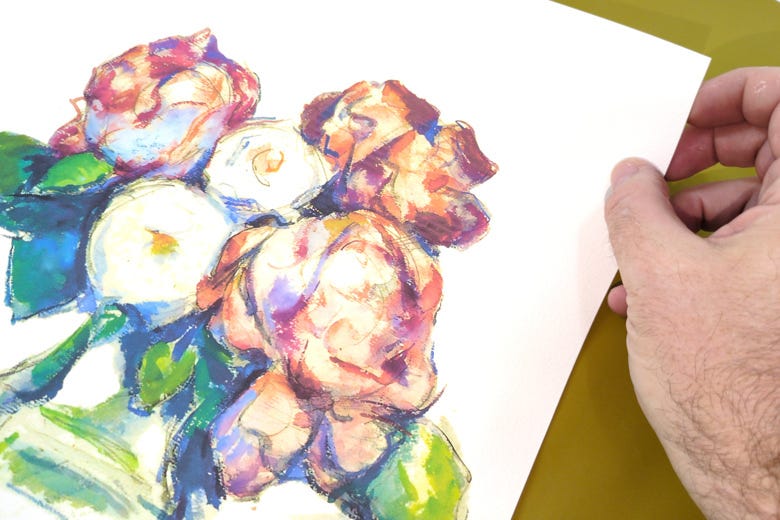
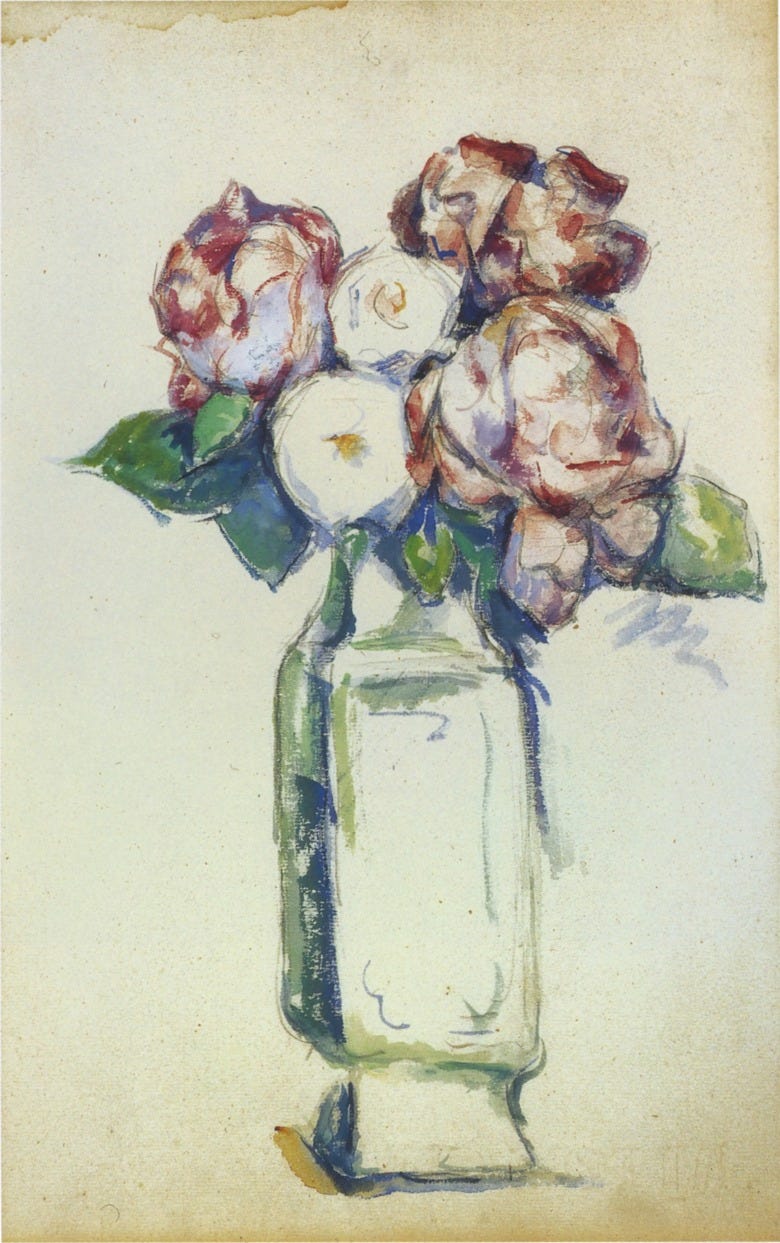
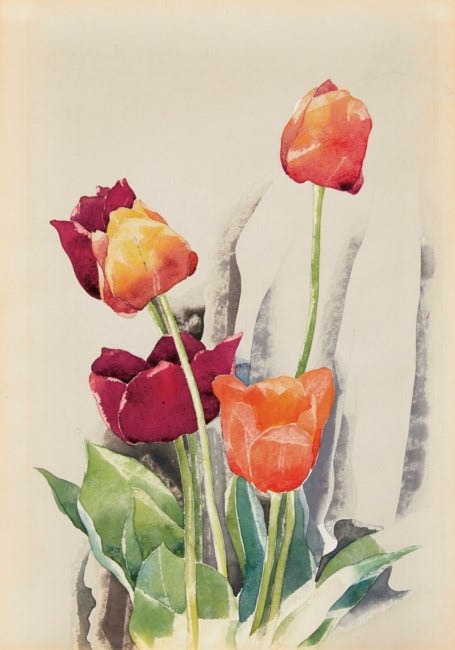
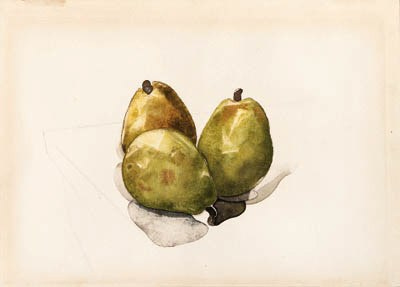
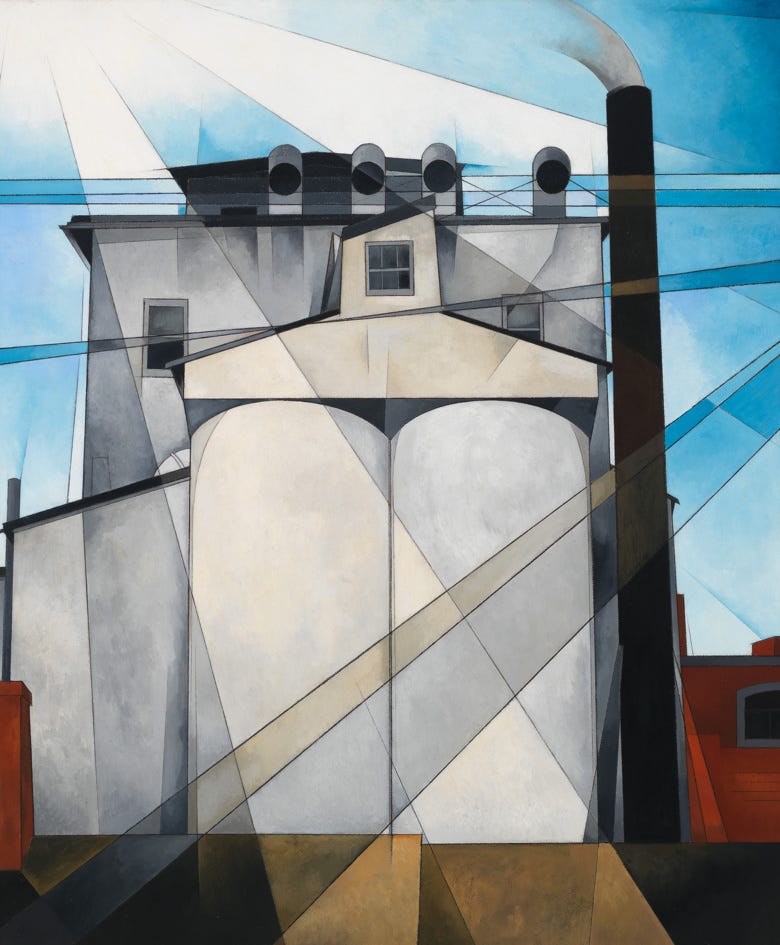
Your reproduction is great.